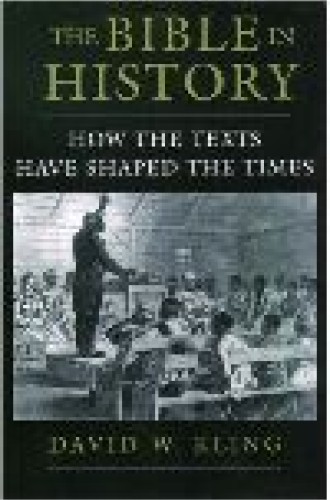The Bible in History
David Kling is interested in how interpretations of the Bible have influenced history and how historical context has shaped interpretations of the Bible. He selects eight key biblical passages that were central at watershed moments in Christian history. The cultural milieu of those different eras predisposed Bible readers to foreground certain scriptures and offer new interpretations to meet the exigencies of their particular situations.
Each chapter presents a self-contained episode which illustrates the reciprocal interplay between text and context: the founding of monasticism in response to Anthony’s literalistic reading of Matthew 19:16-22 (“sell all your possessions . . . then come, follow me”); the battles over the ecclesiastical status of the papacy triggered by Matthew 16:18-19 (“on this rock I will build my church”); the allegorical reading of the Song of Songs by medieval interpreters; the commencement of the Protestant Reformation with Martin Luther’s “discovery” of Romans 1:16-17 (“the righteous will live by faith”); the Anabaptist ethic of pacifism justified by Matthew 5 (“love your enemies”); the pivotal role of the Book of Exodus in African-American sermons, songs and speeches; the Pentecostal experience of speaking in tongues as did the community of Acts 2:1-4 (“filled with the Holy Spirit”); and the push for the ordination of women on the basis of Galatians 3:28: “There is no longer Jew or Greek, there is no longer slave or free, there is no longer male and female; for all of you are one in Christ Jesus.”
Historians, biblical critics, theologians, ethicists and rhetoricians who are interested in the persuasive function of language will all be pleased by The Bible in History. Those who want more development of their own area of inquiry can consult the book’s substantial endnotes. To reach these diverse audiences, Kling has employed a writing style that is erudite but jargon-free, smoothly organized and accessible.
Kling, associate professor of religious studies at University of Miami, is forthright about the necessary limitations of his analysis: the historical episodes are drawn from Western history, the scriptures are taken primarily from the New Testament, and the featured interpreters are all Christians. A less understandable shortcoming, however, is that the “so what?” question remains largely unanswered in the very brief conclusion of the book. What difference does it make if history has shaped the Bible as much as the Bible has shaped history?
Kling’s analysis reminds us that the appropriation of scripture to respond to contemporary needs is a practice that is neither new nor disastrous to biblical authority. The lesson here for those who claim to own the sole correct and eternally biblical pronouncement on gender roles and other topics is that multiple interpretations and accommodation to the times have long been standard hermeneutical practice, and Christian history is richer for it.




